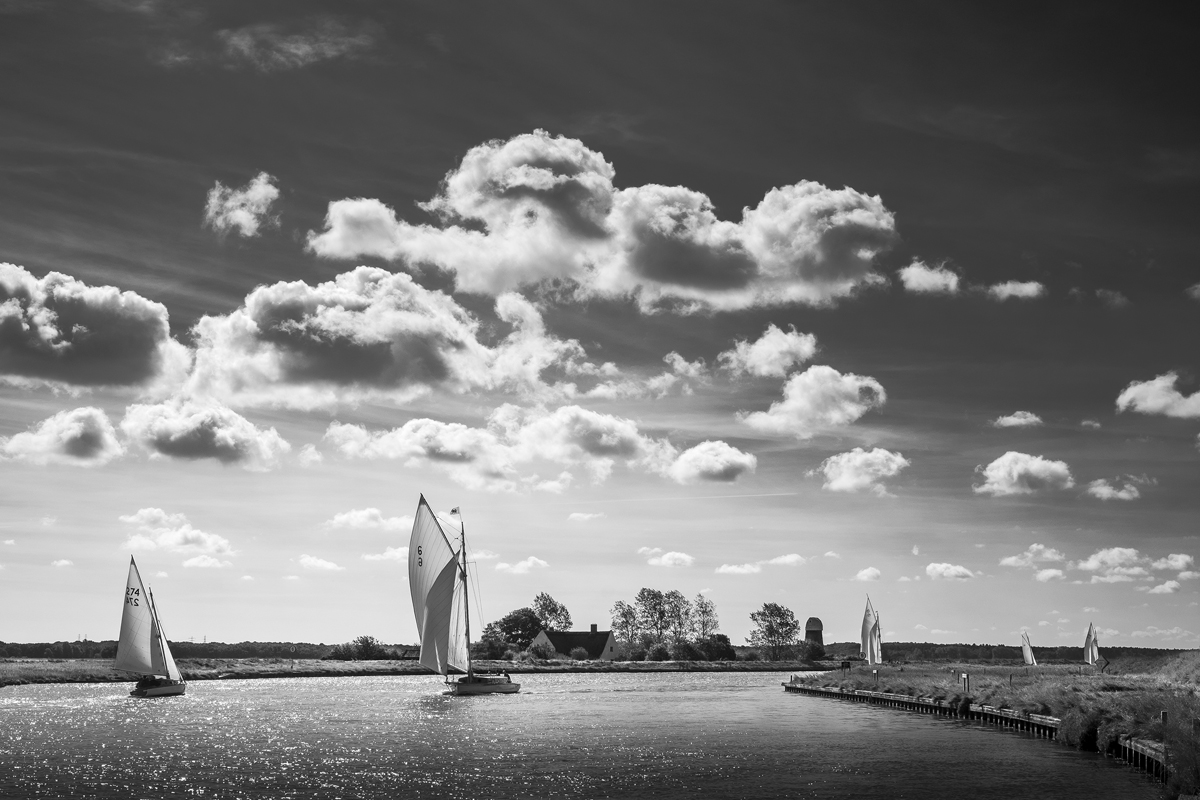

It’s hard to imagine that the Broads would have once been a forest. By the 12th century East Anglia was one of the most settled-in areas of the UK and its once verdant forests had been cleared.
For the next 350 years what we know today as the Broads was a flat field full of labourers with just one job… to dig. They were looking for peat. But as the holes became great pits and the elements did what they do best, these great peat-diggings began to fill with water. Summers froze into autumns and winters melted into springs, and the water-logged peat diggings were abandoned. The people forgot to tell their sons and daughters about the time when the Norfolk and Suffolk Broads had been alive with great forests.

Ever so slowly, nature swept channels between the great pits, until one day there were pools of water connected by rivers and for all anybody knew they had been there since time immemorial. There was nobody to say otherwise and besides, a new sort of forest had begun to grow…
Nature has always been quick to reclaim what is taken from her and the Broads were to be no exception. As soon as those peat diggings had begun to fill with water, life had begun to grow. Out of the sediment sprouted water plants, and the banks drew all manner of life to its refuges. Water voles began to burrow, bitterns discovered the newly shot reeds. When the rivers found their way to the sea new creatures began to arrive, the European Eel travelled all the way from the Sargasso Sea to live in the fresh water shallows. Milk parsley burgeoned with swallowtail butterflies, Norfolk hawker dragonflies stalked the water’s surface. The great pike swept through the ripple-less water like a torpedo.
Man did his best to tame the wild landscape which he had inadvertently created, but despite the construction of dykes and windpumps, flooding continued to prevail creating reedbeds, grazing marshes and carr woodland. But now that the Broads existed, the waterways which the people had created offered a new host of opportunities. It was in the 1600s that people began to extend the rivers, a practise which continued until 1826 with the completion of the Dilham Canal. And so for hundreds of years people created vessels upon which to traverse the rivers which could take them through the counties of Norfolk and Suffolk, to great cities like Norwich or tiny villages like Bungay. They could reach the sea and thereby the rest of the world if they desired it. And so the Broads became a navigational channel, home to nature and humankind both.
Time has swept by quickly for the Broads, and today you’re most likely to see motor cruisers which resemble bathtub-toy boats being driven by jolly holiday makers. But even now the majesty of the traditional black-sailed trading wherry can be seen sweeping through the reeds, and the fleets of highly polished sailing boats can be found racing each other, their white sails reminiscent of the wings of the butterflies who flock to the river plants. In among it all are the water lilies and the wading birds and the invertebrates and fish who thrive upon the accidental habitat which has made the Broads home to a quarter of the UK’s rarest wildlife.
Earlier this week was world rivers day, a perfect opportunity to think about the rivers which mean something to you. It’s too easy to take these habitats for granted and so we hope that this short history of the Broads will help you to appreciate the complexities of these places whose beating heart comes in the way that nature, humanity and history work together in harmony to create a promising future. To discover a whole host of ways in which you can both protect and enjoy the Broads, check out the Visit the Broads website. For more information on World Rivers Day, visit the official website.